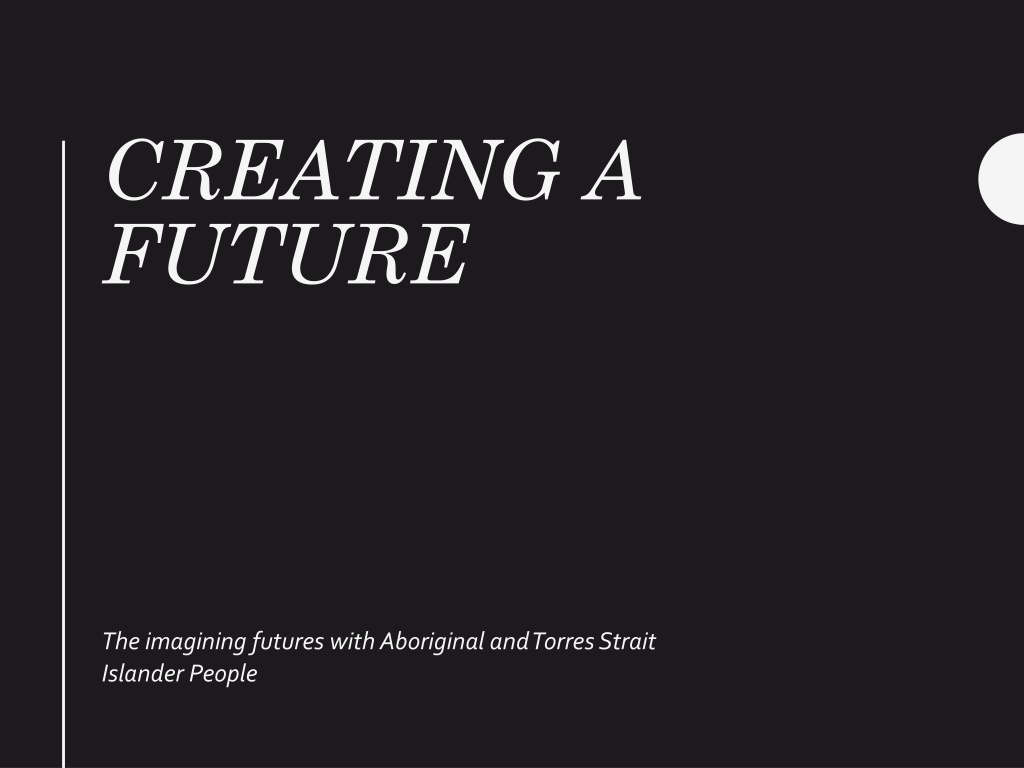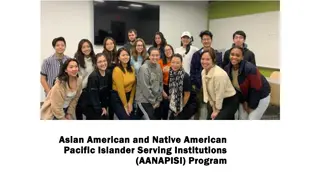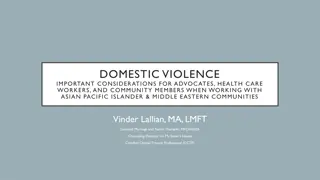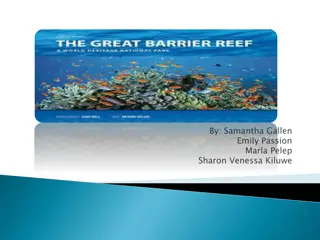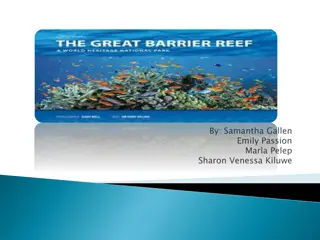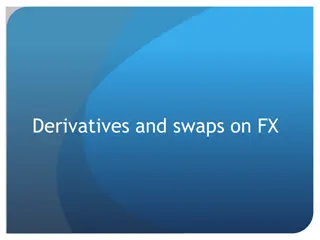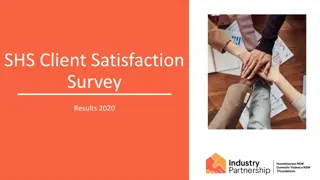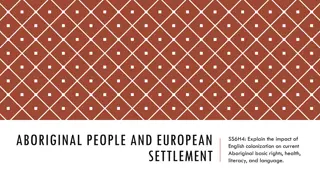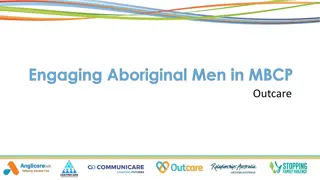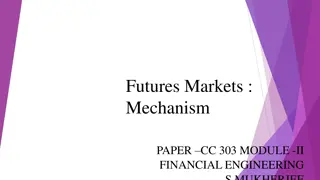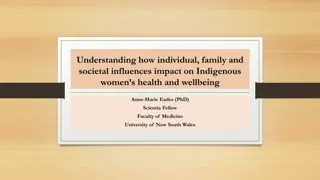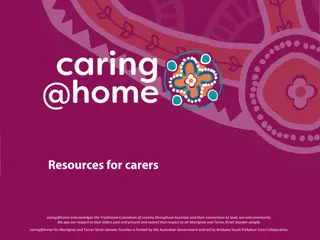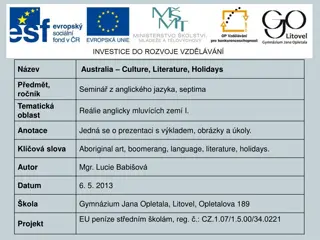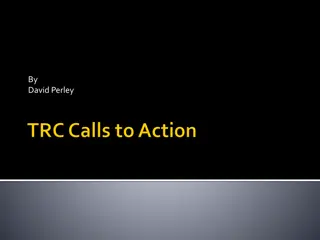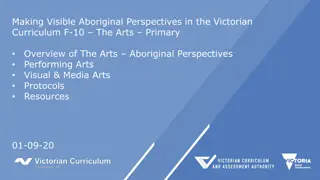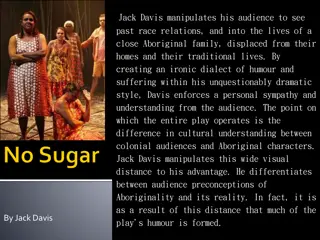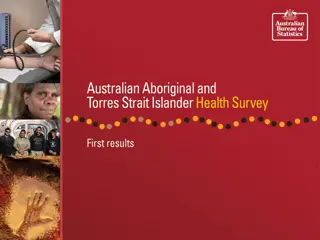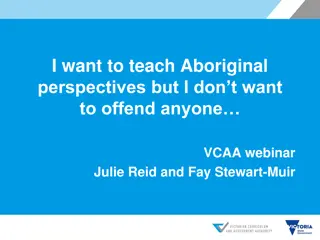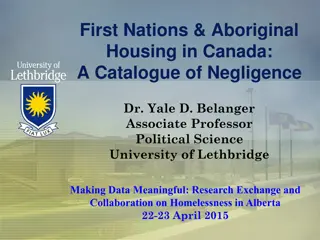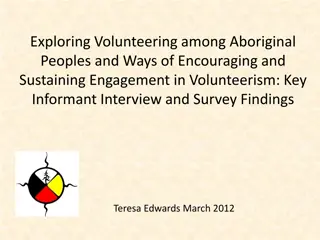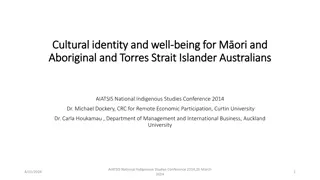Imagining Futures with Aboriginal and Torres Strait Islander People
Creating a future involves principles for present action, studying the effects of the future, partisan and personal aspects of futures work, open and closed futures, open-ended and multiple possibilities, process-oriented approach, quest for alternatives, practical imagination, and challenging habits to make the present remarkable. The work of envisioning futures challenges the normative and embraces the complexity and uncertainty of shaping a future that is inclusive and diverse.
Download Presentation

Please find below an Image/Link to download the presentation.
The content on the website is provided AS IS for your information and personal use only. It may not be sold, licensed, or shared on other websites without obtaining consent from the author. Download presentation by click this link. If you encounter any issues during the download, it is possible that the publisher has removed the file from their server.
E N D
Presentation Transcript
CREATING A FUTURE The imagining futures with Aboriginal and Torres Strait Islander People
Land The land is my backbone I only stand straight, happy, proud and not ashamed about my colour because I still have land I think of land as the history of my nation. GalarrwuyYunipingu, Aboriginal musician [1 Gough Whitlam & Vincent Lingiari
Principles 1. The future is a principle for present action. Principle 1 is both a challenge and an offering to take up our agency and walk 2. The future can be studied by its effects. The future will have effects on what we do today and our thinking and assumptions about the future underpin the decisions we make and can thus be studied in what we do Bussey, M. (2014). Concepts and effects: ordering and practice in foresight.foresight,16(1), 1-16. viewed http://www.academia.edu /7191781/Concepts_and_e ffects_ordering_and_prac tice_in_foresight 3. All futures work is partisan: it seeks to realise preferred futures. This means that one thing foresight works seeks to do is to rethink advantage and context by exploring alternative meanings for advantage and suggesting broader nested possibilities for self- interest to take effect 4. All futures work is personal: it seeks to expand human potential/identity. Futures work is personal because to awaken to context means to find oneself and to explore our potentiality within a context 5. There are two kinds of future: open and closed futures. Contexts often seem hegemonic. When experienced in this way we feel powerless. Our sense of agency diminishes and the future is experienced as closed and given
6. Futures work is open ended and multiple: causality is not linear. Openness cannot be predetermined of course so understanding that the future is multiple and open-ended requires conceptual and emotional resilience on the part of all involved in any foresight exercise 7. Futures work is process oriented not goal oriented the focus is on patterning not a specific pattern. The mindfulness involved here is very much focused on the relational patterning that occurs as context is re-thought. The goal itself, as Principle 7 reminds us, is an excuse for increased capacity and openness within context-structures which can, when unconsciously experienced, limit creativity, innovation and resilience 8. Futures work involves a quest for alternatives. It is all about the quest for alternatives. This quest is based on a qualitative shift in questioning, the rethinking of advantage and the capacity to not just cope with but to value and nurture both complexity and uncertainty 9. Futures work is a form of practical imagination. The future can only ever be imagined, yet imagination is usually shaped and conditioned by the past, so it needs to be reoriented to present and future needs 10. Futures work challenges habit, making the present remarkable. Practical imagination challenges habits that bind us to the past 11. Futures thinking, and the foresight work it inspires, involves nested relational nets and a relational logic to navigate these. context is nested within multiple other contexts all of which interact in creative and often surprising ways
12. Futures thinking and foresight are forms of anticipatory action learning. Involves both individual and collective learning. This learning is framed as anticipatory as it is premised on thinking not about immediate givens that close down the future but on open ended and creative possibilities that are tested and explored through action To this list I have often been tempted to add Jim Dator s challenge: 13. Any useful idea about the future must at first appear to be ridiculous. Finally, the growing edge of social action of course is experimental and therefore can give form to quite surprising, or as Jim Dator would have it, ridiculous ideas. Principle 13 acknowledges that such ideas have utility in that they challenge assumptions and hold the space for alternatives thus generating the creative milieu from which truly useful and robust futures may emerge.
Foresight Principles guide and shape the interactive space in which the work occurs Open context that depends on the presence of human needs, the inquiry they inspire and the action based thinking they provoke
